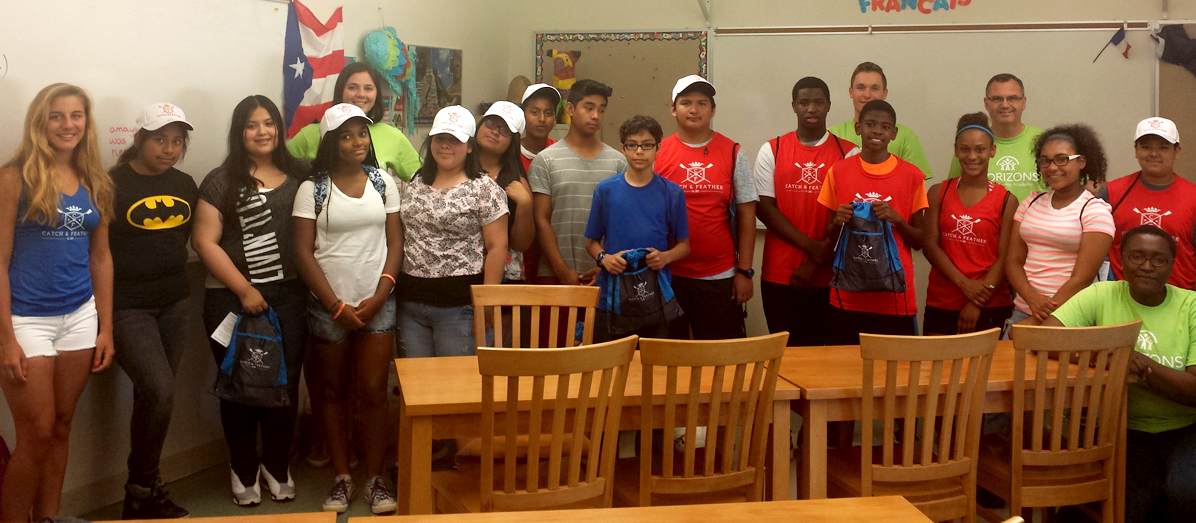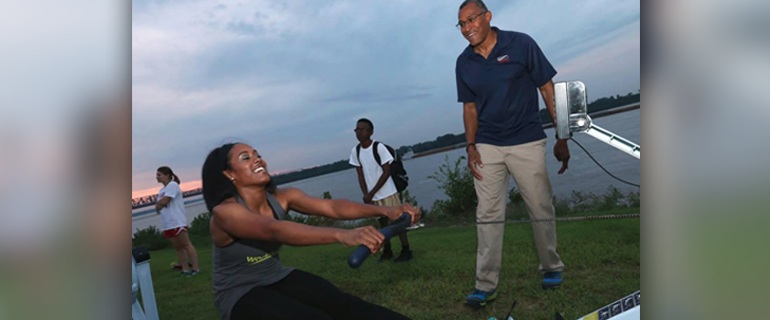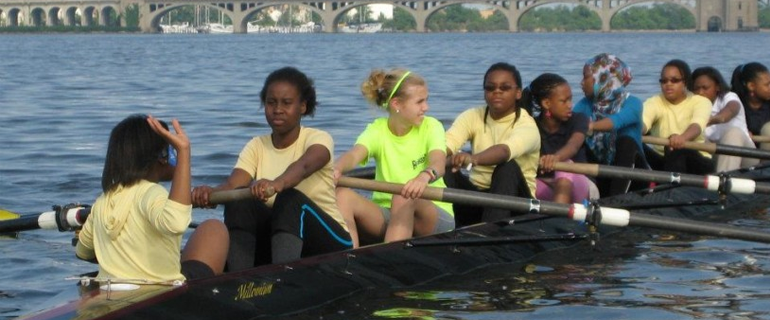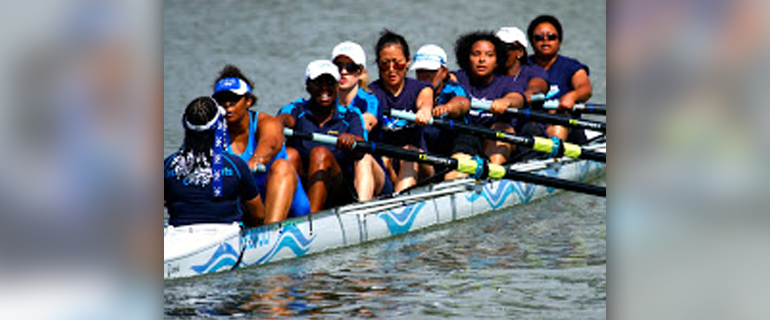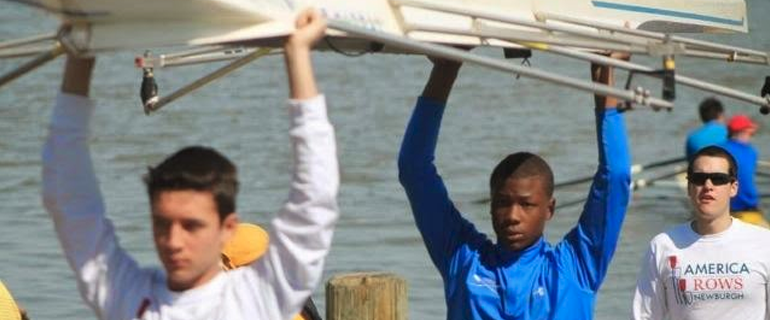Nothing short of amazing.
Founded in 2002 by Amanda Kraus, Row New York started as a small all-girls program in Queens. Today, the organization sports three boathouses and offers youth, masters, adaptive, and learn-to row programs. Every aspect of the organization trumpets their motto, “Pulling Together to Push Ahead.”
“Row New York is exceptional in that 80% of our middle and high school students participate in our programs at no cost,” says Ruby Lyon, Marketing and Communications Manager, Row New York. “Our adaptive programs for people with physical and/or mental disabilities, as well as our youth programs for those from underserved communities, offer the opportunity to experience the joy, teamwork and community that is unique to rowing.”
Youth Programs
Many New York City school districts lack the resources needed to keep students healthy. Many do not even have access to green spaces; recess consists of a mere walk around the block. This lack of basic needs plays directly into the some 85% of students who do not meet the recommended physical activity level nationwide. Through Row New York Youth programs, athletes learn the crucial importance of a healthy lifestyle, and 100% of its participants meet this recommended physical activity level. Rowing also instills the confidence, discipline and mentality that helps teens develop and mature, all the while providing an irreplicable sense of community and family.
Row New York Youth programs also provide students with tools to succeed, offering academic counseling and help with standardized testing. “An incredible 100% of Row New York athletes graduate high school on time, compared to 69% of NYC high school students,” said Lyon. Additionally, over the past 10 years, 96% of Row New York’s graduates have matriculated to college. Whether it’s providing homework aid, SAT/ACT Prep, or a hot meal, this program is a second home to its athletes.
In addition to its main competitive youth program, Row New York has a number of outreach projects that greatly benefit the New York City Community.
- Middle School Indoor — a “traveling” program for New York area middle schools — teaches students the mechanics of rowing, how to erg and how to live a healthy.
- The Juvenile Justice program does the same for young adults in detention centers. Rowing offers them an outlet for releasing energy in a positive manner, as well as the opportunity to be part of something bigger than themselves.
Both of these programs have changed the lives of many young people.
Adaptive Programs
Another important piece of the mission-based programming at Row New York is their adaptive rowing opportunities. Every Saturday, the boathouse in Queens hosts people with physical and mental disabilities.
Row New York also works with District 75, a New York School district comprised of 57 special schools designed to help and teach students with disabilities. Similar to Middle School Indoor, Row New York partners with District 75 in teaching students how to erg and row on water with their on-site visiting program.
Row New York’s new Freedoms Rows program kicked off its first season several weeks ago. Freedom Rows is branch of USRowing that teaches disabled veterans and members of the armed forces how to row. As we have discussed in earlier posts, rowing is an incredibly therapeutic sport — both physically and mentally — and Freedom Rows greatly benefits its participants.
Master Programs
Not just for students and young adults, Row New York also offers masters programs, recreational and competitive, as well as learn-to-row programs for those who want to get involved in the sport. The masters programs help fund the mission-based youth and adaptive programs, making Row New York one big family.
A Home Away from Home
Row New York is not a club or program, but a home. It supports its athletes far beyond the boat, and everyone works together to give anyone — no matter their circumstance — the opportunity to experience the incomparable community that is rowing. Alumni can row competitively without cost in the masters programs, and masters often help with youth and adaptive programs through volunteering and workshops.
Career panels, mentorships, and organization-wide regattas bring together athletes of different ages and abilities for a completely unique bonding experience.
Looking to the future, Row New York has plans for growth and expansion, with more boathouses and more opportunities for outreach. In the coming years, they will “keep pulling forward to push ahead”.
For more information: https://rownewyork.org
Photos courtesy of Row New York’s Claudia Loeber, 2017







